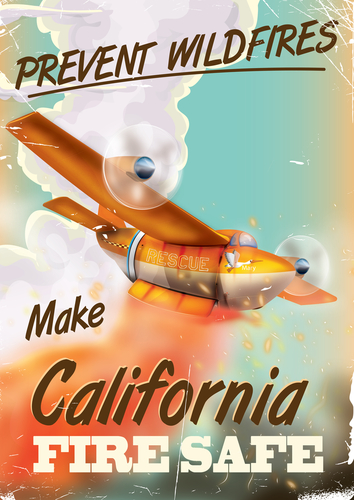California Wildfires: Complaints and Non-Renewals Are Increasing

Non-renewals are also increasing with data showing that in the 24 counties with the highest risk of fire damage non-renewals increased by 15.4 percent in 2016.
Another historic year of wildfires and the incredible damage they do could make it harder for California homeowners to find affordable insurance or in some counties, any insurance at all.
According to the California Department of Insurance, several major insurance companies have stopped writing new policies and are no longer renewing policies in the most fire prone regions of the state. While certainly bad news for homeowners, it makes sense for insurers, they recently paid out over $9 billion in insurance damages due to the Wine Country fires last October.
The costs for the most recent fires in California may end up being even higher. “Insurers are increasingly using computer models to assess the risk of fires for individual homes and deciding that homes in some areas face too high a risk,” said Insurance Commissioner Dave Jones in a recent Santa Cruz Sentinel article. “In the wake of last year’s wildfires, we may see more areas of the state where insurers decline to write.”
Complaints and Non- Renewals Are Increasing
Over the last two years, the state insurance department recorded a sharp increase in complaints and negative feedback from both consumers and consumer groups regarding the difficulty in getting coverage as well as the cost for insurance in certain areas. Non-renewals (the insurer refused to renew a policy) have skyrocketed as well.
Data shows that between 2010 and 2016 over 60 percent of complaints came from the most fire prone zip codes despite the fact that these areas make up only 38 percent of the state population.
Huge premium jumps have become common with state officials documenting premiums going from $1,000 to $4,000 in a one-year period. Non-renewals are also increasing with data showing that in the 24 counties with the highest risk of fire damage non-renewals increased by 15.4 percent in 2016. In Placer County, which saw the highest number of non-renewals, one in every 93 homes saw a non-renewal notice from their insurance company.
Insurance companies are increasingly turning to technology to assess a homes fire risk and many of the models which are developed by companies outside of the state rarely take into account the efforts that homeowners have made to reduce the risk of fire damage and keep their homes safe.
Costs Are Increasing
As non-renewals increase, many homeowners have been forced to turn to the state mandated Fair Plan which is the insurer of last resort in California. The FAIR plan requires insurers to offer coverage in high-risk areas but these policies can be very expensive and offer less than robust coverage.
Unfortunately, these plans may be the only choice for homeowners living in high-risk areas. State officials expect that more insurance companies will be pulling out of the California market due to record losses and increased fire risk. In addition, they expect rate increases and for certain parts of the state to be reclassified to high-risk, increasing insurance costs in those areas.
Wildfire Tips
If you live in a wildfire prone area it is a good idea to make sure you have done some fire mitigation around your home. It might not only keep your home safe but may also result in you being able to fully protect your home with an insurance policy. Here are a few tips for keeping your home safe:
- Clear leaves and debris from porches, decks and gutters, which prevents embers from starting a fire.
- Remove flammable materials such as firewood stacks and propane tanks so they are at least 30 feet away from the foundation of your home, outbuildings, sheds and garages.
- Fires can quickly spread to the treetops, prune trees close to your home so that the lowest branches are at least 6 to 10 feet off the ground.
- Inspect your roof and shingles on a yearly basis and repair any that are loose or missing, this will help reduce the chance of embers starting a fire.
- Maintain an emergency supply kit, which includes important documents, personal identification as well as medications.
- Plan and practice two routes out of your neighborhood and set up a meeting place in the event you get separated.
